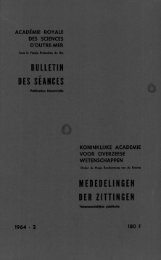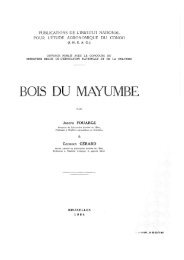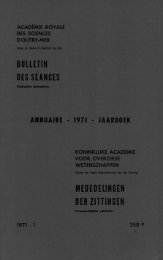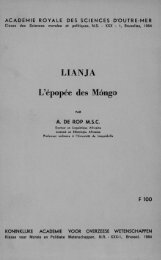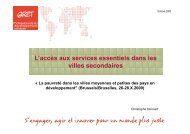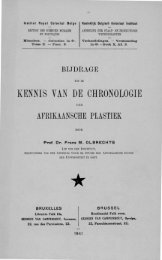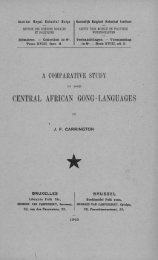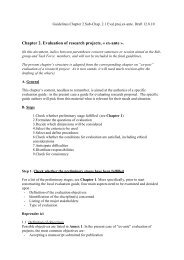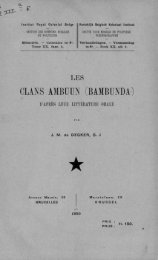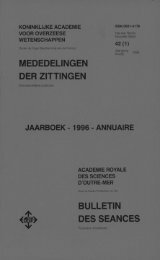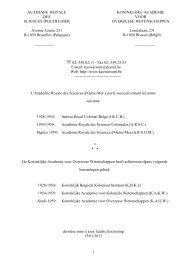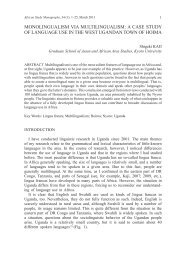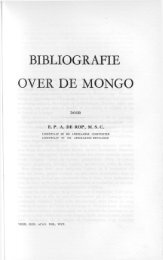(1973) n°3 - Royal Academy for Overseas Sciences
(1973) n°3 - Royal Academy for Overseas Sciences
(1973) n°3 - Royal Academy for Overseas Sciences
Create successful ePaper yourself
Turn your PDF publications into a flip-book with our unique Google optimized e-Paper software.
— 587 —<br />
PoREH and El a t a ( 2 3 ) . However, one still needed to know the<br />
detailed structure of the medium geometry to deduce the unknown<br />
coefficient of proportionality i.e. the permeability tensor.<br />
For the flow of a homogeneous incompressible fluid through<br />
an isotropic homogeneous porous medium. Darcy’s law is<br />
— v p — p g k — p ^ U = 0, (1)<br />
K.<br />
where u is the mean velocity or the average flux through an extensive<br />
porous medium per unit surface, p is the pressure, v the<br />
viscosity, p the density, K the permeability, and v is the del-<br />
operator. The gravity acceleration is g, and k is a unit vector<br />
directed upwards.<br />
The issue of the validity of equation ( l) is further obscured<br />
by the similarity of the average flux relation <strong>for</strong> steady Poi-<br />
seuille flow through a straight pipe, and <strong>for</strong> the average flux<br />
through an extensive porous medium. In both cases, it turns out<br />
that the volume flux is proportional to the pressure gradient.<br />
This similarity has tended to mask the very important conceptual<br />
differences between the two situations.<br />
For the flow through an anisotropic porous medium, it is<br />
generally assumed that equation ( l) is valid provided that one<br />
uses a directional permeability tensor (Ka) O ’B r ie n (21)<br />
has per<strong>for</strong>med viscous flow calculations <strong>for</strong> some idealized orthotropic<br />
porous models. The calculations provided some basis<br />
<strong>for</strong> quantitative values of a directional permeability tensor to<br />
replace omni-directional and semi-empirical engineering estimates.<br />
A generalized Darcy’s law was analytically derived by S a f f -<br />
m a n (26c) <strong>for</strong> a homogeneous fluid. He defined two quantities<br />
which he averaged over the porous medium surface: the interstitial<br />
velocity q(x), a continuous function which vanishes at<br />
the solid surfaces of the matrix, and the interstitial pressure<br />
p*(x), a function that is discontinuous over the solid surfaces<br />
of the medium. For steady inertia-free flows, he writes the<br />
generalized Darcy’s law as<br />
pvKa •u = p v v : u — ?;V p — Tjpgk (2)<br />
where i? is the porosity. This equation still contains the Lapla-



